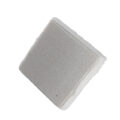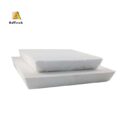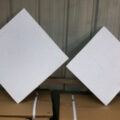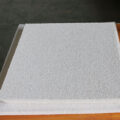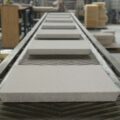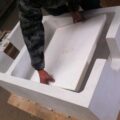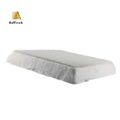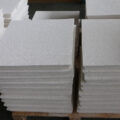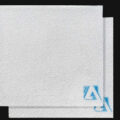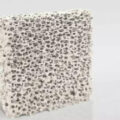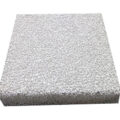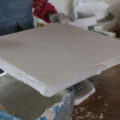Foam ceramic is a kind of porous material. Foam Filter Material for Aluminum Foundry is a third-generation porous ceramic product, developed after the first-generation common porous ceramics and the second-generation honeycomb porous ceramics. Its pore size ranges from nanometer to micrometer, and it has three-dimensional network structure and high porosity material characteristics, and the porosity can reach up to 90%. It has the advantages of light weight, high porosity, large specific surface area, thermal shock resistance, corrosion resistance, high temperature resistance, long service life and good filter adsorption.
The development of the third generation of foam ceramic materials began in the 1970s. As a new type of inorganic non-metallic filter material, it mainly uses raw ore powder, kaolin, or ceramic industry waste residue, fly ash, coal gangue, and marble tailings. , Slag and other inorganic materials as raw materials, mixed with a certain proportion of foaming agent, co-solvent, etc. to make water-based ceramic slurry, immersed in foam plastic to form a ceramic film coating, and then fired. According to the liquid metal object to be filtered, common materials are silicon carbide, alumina, zirconia, magnesia, etc.
At present, foam ceramics have been widely used in many fields. In addition to purifying molten metal in the metallurgical industry, they are also used in thermal insulation materials, chemical catalyst carriers and other application fields.
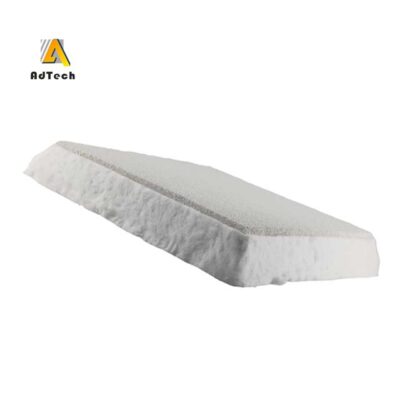
Foam Filter Material for Aluminum Foundry
The foam ceramic filter is mainly used in the casting process to purify the liquid casting alloy and reduce or eliminate various non-metallic inclusions and exhaust problems during casting. Due to defects in casting problems such as non-metallic inclusions, the proportion of casting waste products to the total number of waste products is as high as 50%-60%. While various costs increase, the outflow of excess waste products can be expected to damage the external environment, and the inclusion defects not only Seriously dragged down the mechanical properties and casting performance of the casting, but also had a harmful effect on the cutting processing and appearance of the casting.
In order to solve this problem, people initially used wire mesh, perforated steel plates, etc., to make simple filters inserted into the pouring system to remove inclusions; to two-dimensional structures such as silicate pin fibers and boron nitride fibers. Nowadays, foam ceramic filters use pore size to mechanically intercept large particles of mixed oxides and filter cake to filter small particles of mixed oxides. And with the adsorption and rectification capabilities, the production line of foam ceramic filters has significantly improved the yield of castings. For example, after using the foam ceramic filter in Dongfeng No. 2 Casting Factory, the production rate increased from 65.3% to 71.5%, and the molten iron was saved by 6% only from the weight of the riser. The hardness of the filtered casting is also significantly improved, which in turn extends the life of the cutting tool.
Foam ceramic filters generally use polyurethane foam as a carrier, immersed in ceramic slurry made of refractory aggregate sintering aids, binders and other fine powders and water, and then squeeze out the excess slurry, leaving the coating The ceramic material around the foam fiber is then dried, fired and sintered at high temperature, and finally the foam-like ceramic product is left. Due to the different casting temperatures of casting alloys, foam ceramic filters with refractory materials should be selected for castings. In recent decades, foam ceramic filters of various materials have been developed based on the performance of alloys of different materials at home and abroad.

